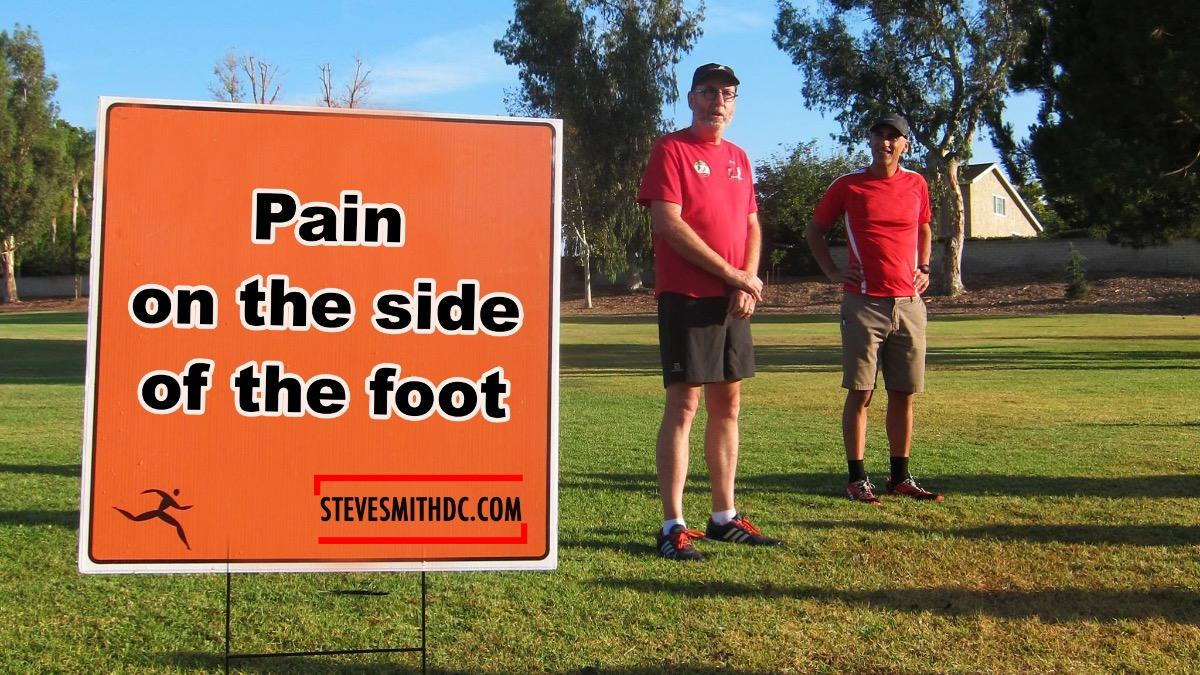
Pain Along the Outside of the Foot Can Come From Three Main Sources
1. Stress Fractures
The first and most dangerous problem is stress fracture.
Stress fractures often come on slowly so they don’t feel like a fracture.
Since these are micro fractures, they are sometimes not painful until you put the bone under excessive stress such as running. The pain often intensifies as you run, becoming more and more painful until the bone breaks.
The outside of the foot is the most common place for this to occur, along the mid shaft of the 5th metatarsal.
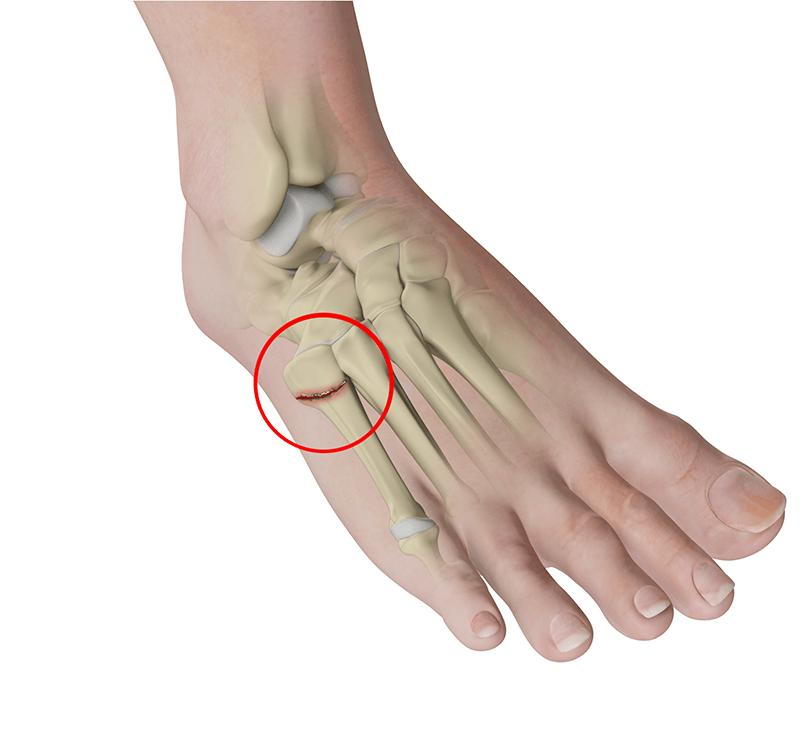
Try this test:
Find the long bone along the outside of the foot and try to bend it by holding on the the ends and pushing up from the center of it with your thumb.
If you feel pain in the mid shaft of the bone then you are probably in trouble and you’ll need to rest it for the next 6 weeks.
Keep exercising with a stress fracture and you run the real risk of a broken bone and all of the troubles that ensue, including a cast and possible surgical pin. If you have pain while hopping on the foot, especially on the first hop, you may have a stress fracture.
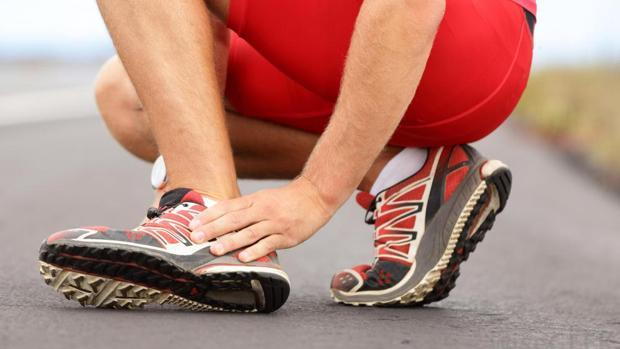 2. Tendonitis
2. Tendonitis
The second reason may be Tendonitis at the insertion of the Peroneus Tendon.
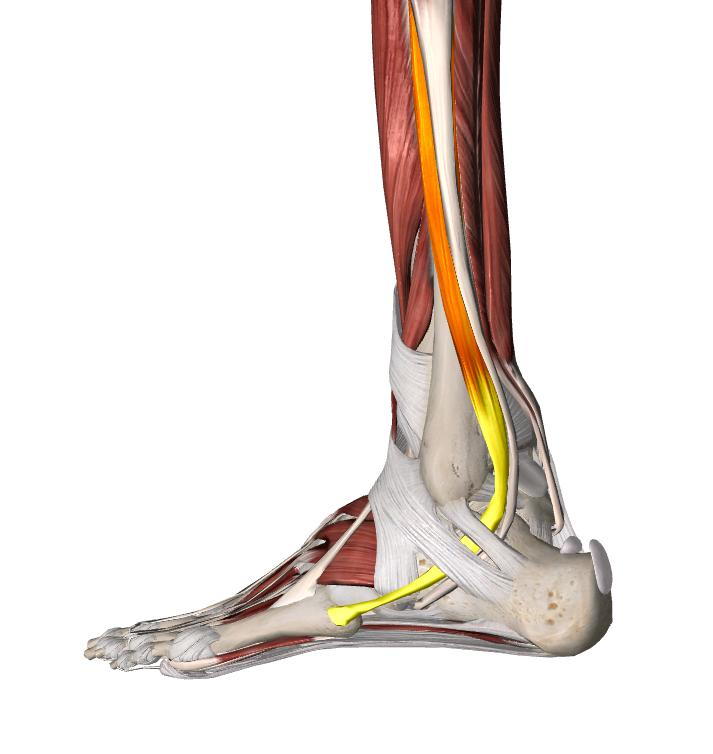
This is the tendon that begins as muscle and narrows into a tendon along the outside of the calf and wraps around the back of the ankle bone known as the lateral maleolus. This tendon is attached to the outside of the foot at the wide point near the mid foot.
The right foot often suffers from pain at this location because it is usually the foot on the low side of the road. This can be further complicated by a short right leg, thereby placing more stress on the outside of the foot.
If you have this problem then there are several things that you can do to mitigate the problem but it will probably not go away anytime soon. You can usually run with peroneus tendonitis though, if you make some changes to the stresses on the outside of the foot.
Try This:
Take a look at your shoes and see if the wear pattern on the sole of the shoes are more oriented to the outside of the forefoot. If it is, then you are over supinating, meaning you are running on the outside of the foot. Supinators get about half of the normal life out of their shoes and have to replace them much more frequently.
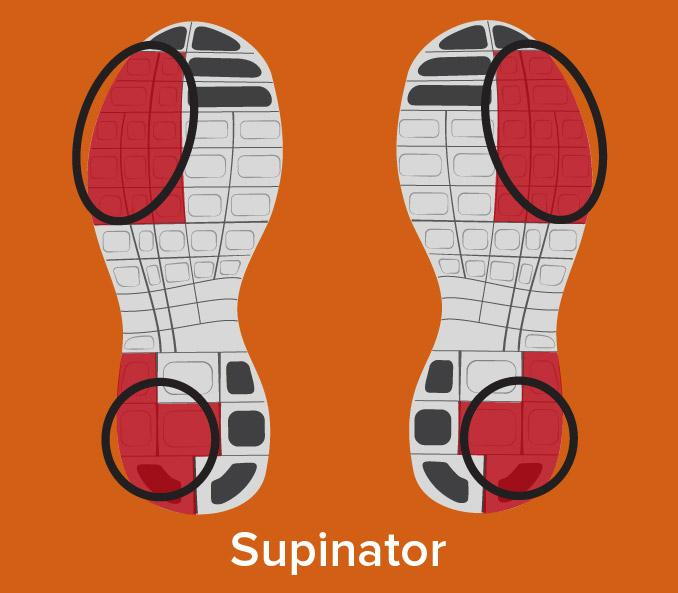 Speed is a major cause of forefoot stress because it causes you to run on your toes.
Speed is a major cause of forefoot stress because it causes you to run on your toes.
If you add hills and speed you are putting maximum stress on the front of your foot. If this has caused the problem the the fix for it is simple, stop running fast up the hills. In fact stop running fast altogether until the problem goes away.
Anti-inflammatories
There are a few approaches to anti inflammatories Use over the counter medicines called N.S.A.I.D's, non steroid anti inflamatories.
Advil, Ibuprofen, Motrin are all pretty much the same. I wouldn’t recommend taking these for extended periods of time, since they can have some deleterious effects on you kidneys and may cause gastric problems.
Many runners use Naproxyn or Aleve which can be taken every 12 hours instead of every 6 hours. The idea is that since you have to take less of it, you pose less of a threat to you stomach. The gel caps seem to be easier to digest and are easier on your digestive system.
Since the affected area is close to the surface, you may derive benefit from a topical anti inflammatory such as Aspercreme. Applying folk remedies like Vaporub, Ben Gay, China Gel, etc. are of limited value; in other words, they feel good but cause no physiological effect and contrary to popular opinion, do nothing to speed healing.
Ice
Ice is the most powerful anti-inflammatory I know of.
Use a good gel ice pack that has been kept in the refrigerator. If your ice pack has been in the freezer, it may cause tissue damage so make sure that you have a sock or some other fabric between the ice pack and your foot. A 10 minute treatment time is sufficient, since the affected area is close to the surface.
Ultrasound
Ultrasound works very well for this problem. The effect of a single treatment can be dramatic for this problem because the tendon is close to the surface and accessible to the therapy. This therapy should be done in a PT clinic or chiropractic office since the application requires a license. Don’t have very many of these treatments though. If this treatment is going to work, you will know within 2 or 3 visits. Usually 3 weeks of ultrasound is sufficient.
Epsom Salt
Epsom Salt soaks do a great job at reducing swelling and inflammation. Fill a bucket with enough very warm water to submerge the affected area and then pour in Epsom salts until is will no longer dissolve. This is called a super saturated solution and will draw out any swelling. Do this for 20 minutes every day.
Check Your Orthotics
If you are wearing orthotics of any kind, this would be a good time to scrutinize them since many of these appliances are made with the assumption that almost everyone over pronates (rolls the foot excessively inward) during the gait cycle.
This often results in improper biomechanics, loading huge stresses on the outside of the foot. Shoes that have too much pronation control can cause the same effect.
Take a look at your shoes and see if there is a lot of plastic or other cushioning material along the instep area. If the shoe is nearly straight along the inside of the arch then you may have “Motion control shoes” and need to switch to another type of shoe.
Other shoes that control motion known as “Stability shoes” can cause the same problem. In general, runners with high arches should not use either of these type of shoes.
The best way to tell if your shoes are the right type is to go to a running specialty store. They will know what type of foot you have and what type of shoe will work best. Fitting running shoes is not an exact science and they can get it wrong but in general the specialty stores get right way more often than they get it wrong.
Strengthening Exercises
There are exercises that can help to strengthen the the muscles that attach to the tendon. Standing on a step and doing calf raises and slowly lowering can be helpful in developing strength and flexibility.
Another good exercise is making circles with your foot. Start with the toes in contact with the floor and slowing rotate the foot in large circles. Do this for 20 seconds every hour of the day to develop flexibility.
Foam Rolling
You can try using a foam roller along the side of you calf. this will only help if the area is painful. if there is no pain there then you will not derive any benefit.
Some Tendonitis Don'ts!!!
There are some don’ts to consider:
- Do not get a cortisone injection of this area. Not only is it painful but it can weaken your tendon.
- Do not get orthotics as a first treatment. They often worsen the problem or caused it in the first place.
- Don’t get off the shelf orthotics either. I often recommend the off the shelf orthotics but this is one condition where they are only going to prolong or worsen the problem. Only in rare cases do they help.
3. Shoe Lacing
There is a third problem that can cause pain along the outside of the foot.
If you have contact pressure along the outside of the shoe it can rub along the wide bony area of the foot, causing an irritation.
The best way to handle this is by locating the show laces nearest to the affected area and simple re-lacing the shoe to skip that area.
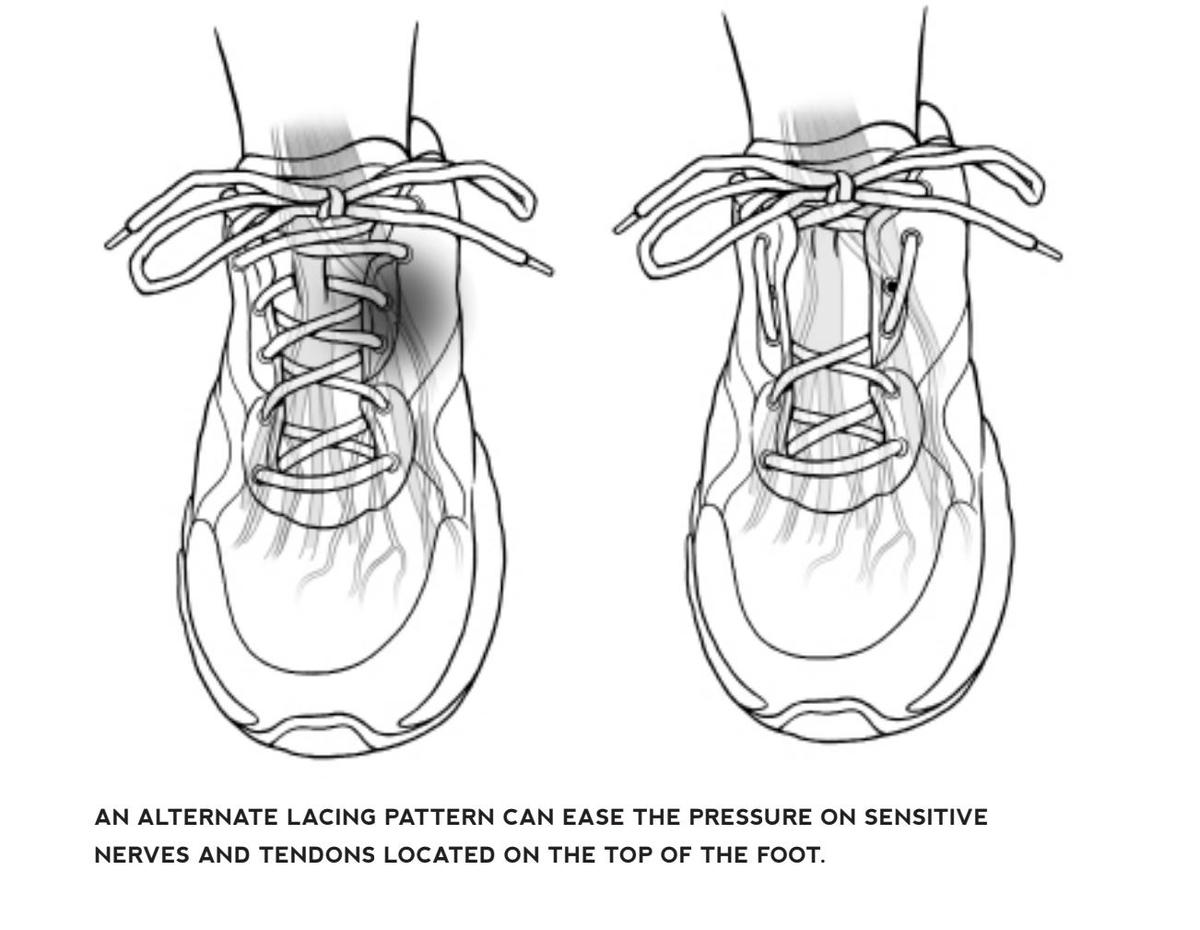
Sometimes the shoes are fine during short runs but as your foot swells on the long runs there is more pressure and the area can get irritated.
Sometimes it is just the fit and you need new shoes. The most troublesome shoes are new or very worn ones. Be wary of either.
In general. runners are going to need 2 or 3 pairs of running shoes per year if you a Marathoner, less if you run less mileage. I always keep 2 pairs of shoes, new ones and worn ones. That way I always have a good pair to race on without having to run on brand new shoes. Besides, I love the smell of a new pair of running shoes.
If you try these fixes and the pain on the side of your foot continues or worsens; please contact us at the office right away. We would be more than happy to look in to your particular situation and get you back running pain free as soon as possible!
Hope this helps,
Dr. Steve Smith


